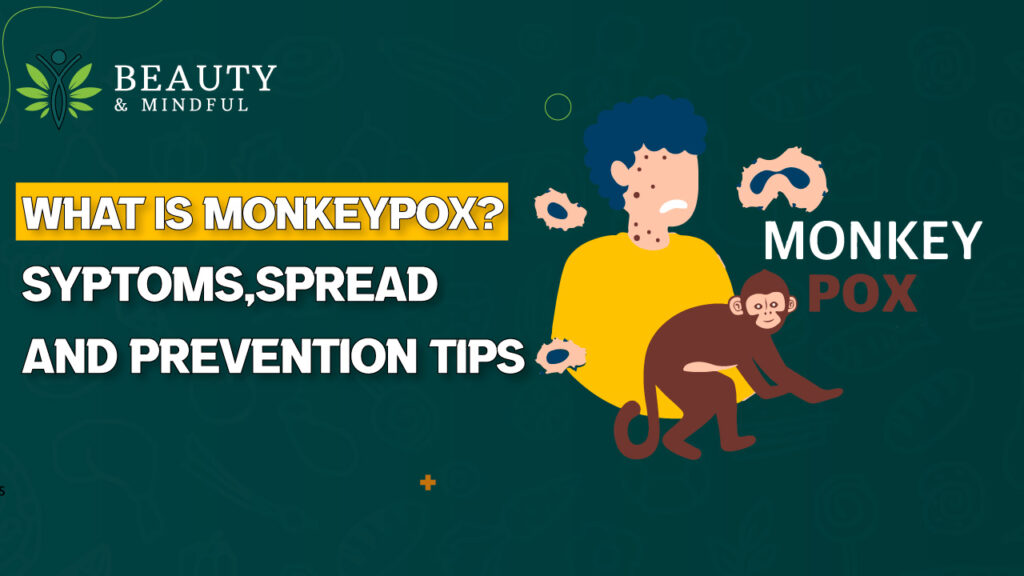What is Monkeypox? A Complete Guide on Symptoms, Transmission, and Prevention
Monkeypox has made headlines worldwide, but what exactly is it, and how can we protect ourselves? In this blog, we’ll explore what is monkeypox, how it spreads, and the essential steps for monkeypox infection control. With rising cases globally, it’s more important than ever to stay informed and take the right precautions.
What is Monkeypox?
Monkeypox is a viral disease caused by the mpox virus, which belongs to the same family as smallpox. Unlike smallpox, is less deadly but can still lead to serious health concerns. The virus primarily originates from animals, particularly rodents and primates, through zoonotic transmission of monkeypox. Human cases have increased due to factors like international travel and close human contact.
Symptoms of Monkeypox: From Skin Lesions to Fever
The symptoms of monkeypox usually appear between 6 to 13 days after exposure, which is known as the mpox incubation period. Initial signs resemble common viral infections and include fever, headache, muscle pain, and fatigue. Following this, a distinctive rash develops, often starting on the face and then spreading to other parts of the body, including the hands and feet.
These rashes evolve into skin lesions from mpox, which are fluid-filled and can be quite painful. Over time, these lesions scab over and heal. Fever and rash in back are the hallmark symptoms, and while most cases resolve in 2 to 4 weeks, some individuals, especially those with weakened immune systems, are at a higher risk of complications.
How Monkeypox Spreads Between Humans
How monkeypox spreads between humans is primarily through direct contact with bodily fluids, lesions, or contaminated materials like bedding. Prolonged face-to-face contact can also lead to transmission via respiratory droplets. Human-to-human transmission of has become a greater concern, especially in social settings where individuals are in close contact.
Contagious Stage of Monkeypox
The contagious stage of mpox begins when the first symptoms, like fever and fatigue, appear and continues until the skin lesions have scabbed and fully healed. During this time, the virus is most transmissible through physical contact or contact with contaminated objects.
Monkeypox Exposure Risk and Prevention Strategies
The monkeypox exposure risk is higher for people who live in or have recently traveled to areas where the virus is endemic, such as Central and West Africa. However, with the global outbreak in recent years, anyone can be at risk, particularly if they come into close contact with infected individuals or contaminated materials.
Prevention Strategies
There are several monkeypox prevention strategies you can implement to reduce the risk of infection:
- Regular handwashing with soap and water.
- Avoiding contact with people or animals that may be infected.
- Wearing protective gear if caring for someone with mpox.
- Following mpox isolation measures if you are infected.
These basic steps go a long way in reducing distance transmission and preventing further outbreaks.
Public Health Response to Monkeypox Outbreaks
In the recent global outbreaks, countries have responded quickly with public health response to mpox, including rapid detection, contact tracing, and isolation of infected individuals. Moynkepox quarantine protocols have been implemented to curb the spread, especially in areas with large gatherings or travel hubs.
The 2022 global outbreak showed the importance of swift action, as cases appeared in over 100 countries, sparking concern. However, thanks to mpox outbreak management and public awareness, further transmission has been minimized in many regions.
Monkeypox Vaccination Guidelines
Vaccination is a key part of mpox infection control. While there isn’t a specific vaccine for mpox, the smallpox vaccine has proven to be highly effective due to the similarities between the two viruses. Mpox vaccination guidelines focus on high-risk groups, including healthcare workers, close contacts of infected individuals, and those living in regions with active outbreaks.
The monkeypox vaccine efficacy is estimated to be around 85%, significantly reducing the chances of contracting the virus. Many countries have ramped up vaccination campaigns to prevent further spread.
Treating Monkeypox: From Antiviral Medications to Supportive Care
Currently, there is no specific cure for unit, but several antiviral treatments for score can help manage symptoms. For severe cases, antiviral medications used for smallpox, such as tecovirimat, may be employed, although these are typically reserved for high-risk individuals.
Treating Monkeypox Symptoms
For most people, treating symptoms involves supportive care—managing pain, reducing fever, and preventing dehydration. The skin lesions, while painful, will eventually heal without intensive medical intervention. However, in rare cases, complications like pneumonia or sepsis can occur, requiring advanced medical care.
How Long Does Monkeypox Last?
The course of illness for typically lasts between 2 to 4 weeks. During this time, it’s important to monitor symptoms closely and follow guidelines for mpox isolation measures to avoid spreading the virus. How long monkeypox lasts can vary depending on individual health factors and whether there are any underlying conditions that could prolong recovery.
Monkeypox Risk Factors and Preventive Measures
Certain groups are more vulnerable to severe outcomes from monkeypox. These include children, pregnant women, and people with weakened immune systems. Understanding these monkeypox risk factors can help prioritize prevention and treatment in higher-risk populations.
Additionally, staying informed about local outbreaks and practicing proper hygiene are crucial steps in avoiding monkeypox infection.
Public Health Measures for Monkeypox Outbreaks
Effective mpox outbreak management relies on public health initiatives such as rapid detection, contact tracing, and public awareness. Governments and health organizations are working together to minimize the spread of the virus through community engagement, vaccination, and hygiene promotion.
Conclusion: Staying Safe and Informed About Monkeypox
While remains a serious concern, especially with its spread to new regions, it is a preventable and manageable disease. Through proper infection control, vaccination, and timely medical care, the spread of the virus can be curbed.
By following public health guidelines and staying informed aboutprevention strategies, you can protect yourself and help reduce the impact of future outbreaks. Stay safe, and remember that community efforts play a crucial role in controlling this virus.
YOUTUBE VIDEO:





